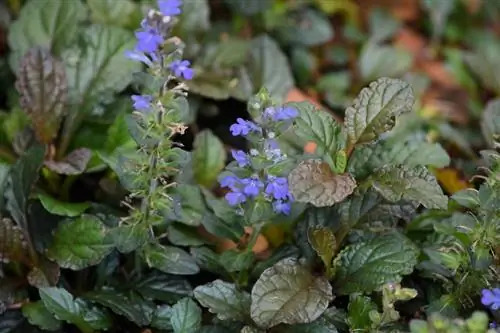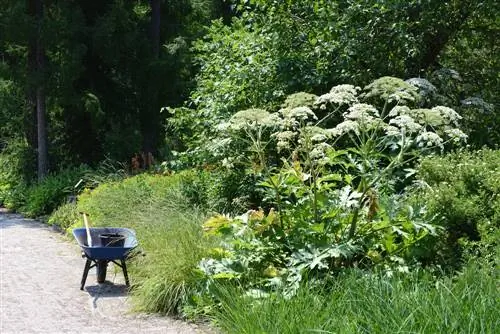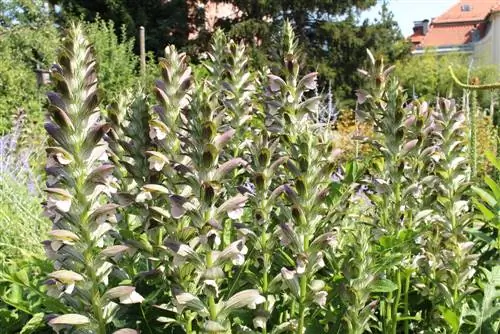- Author admin [email protected].
- Public 2023-12-16 16:46.
- Last modified 2025-01-23 11:22.
Meadow hogweed and giant hogweed both belong to the same plant family and are very similar. However, meadow hogweed is a native, harmless plant. Giant hogweed, on the other hand, is a poisonous, invasive neophyte.

How do meadow hogweed and giant hogweed differ?
A main feature to distinguish between the two hogweed species is thesize of the plant in adult plants. Meadow hogweed reaches a maximum height of 1.5 meters. Giant hogweed, on the other hand, grows around three to four meters.
Why do I need to know the hogweed species?
Giant hogweed, also known as Hercules,is very poisonous and must not be touched. Hogweed contains toxic furocoumarins. While their concentration in meadow hogweed is low, giant hogweed contains large amounts of it. These toxic substances destroy the skin's natural sun protection. If sunlight shines on the affected area, severe burns occur. Furocoumarins can also be evaporated from the plant. Therefore you should not approach the plants.
How to distinguish hogweed species in young plants?
In addition to the height, you should use the stem of the plants to distinguishThe giant hogweed has many dark spots on its strong stem. In contrast, the meadow hogweed has no color differences. Another characteristic to identify is the hairiness of the leaves. The giant hogweed has thick, bristly hair. The meadow hogweed has rather fluffy-looking hairs.
Tip
Hogweed in the garden
As a layperson, it is better to generally avoid hogweed species. Giant hogweed is unsuitable for the garden because it spreads so widely. Meadow hogweed is also slightly poisonous. If there are children or animals in the household, avoid this plant too.






